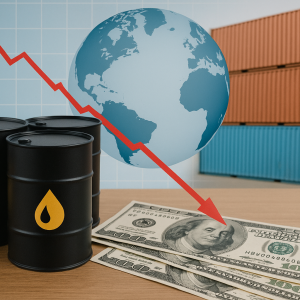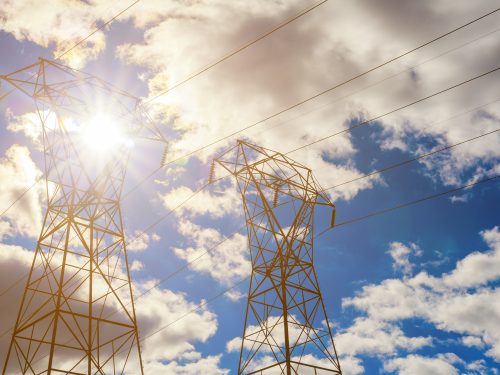Share on
Slow growth. In Q2 2024, services slowed down although still growing, industry continues to decline (despite the recovery in May). Good signs for consumption; investments and exports hold but do not drag. The timid ECB cut is still not reflected in household and business rates. Still high inflation in the Eurozone and USA slows down the decline in rates. Oil price rises.
Still high inflation in the Eurozone. In Italy, inflation is low and stable (+0.8% per year in June), with core prices falling below the ECB threshold for the first time (+1.9%). In the Eurozone, on the other hand, total inflation is high, down only a tenth to +2.5% (from +2.6% in May) and core is steady at +2.9%. The Eurozone-Italy gap in core price dynamics has thus increased to one point, resulting in a higher real rate in our country. Inflation is even higher in the USA: +3.3% per year in May.
Slow fall in rates, calm markets. The markets only expect the first FED rate cut (of -0.25%, from 5.50%) in September. Even for the ECB, which has already moved (to 4.25%), a second cut is only expected after the summer. The dollar/euro exchange rate is stable at 1.08. Sovereign rates in the Eurozone rose about 0.2 points on 1 July in the wake of the French elections, but came back down the following week and spreads moved little (BTP-Bund +138 points). European stock exchanges did not show any shocks in the last month, but were weak (London -0.5%, Milan -1.4%), whereas the US stock exchange was up (+4.0%).
Swinging energy prices. In July, the price of oil rose again, to USD 88 per barrel on average (82 in June); while the price of gas was stable, at EUR 33/mwh (from 34). The dynamics are reversed compared to June, but both prices are high. The effect on consumer price dynamics will be (slightly) favourable for electricity and gas for households-businesses, upwards for transport fuels.
Services slow down. After the rebound of Istat turnover in April, the RTT for services (CSC-TeamSystem) reported a decline in the sector in May. And in June the PMI continued to fall (53.7 from 54.2), although it remained in the expansionary zone, while business confidence fell continuously from April to June. In Q2, therefore, services may have slowed down (after +0.3% in Q1).
Weak industry. Industry turnover recovered in April (+0.8% in volume), but RTT anticipates a slight decline in May (-0.4%). Production, after 4 months of decline, recovered only +0.5% in May: -1.0% gained in the 2nd. The outlook is sluggish: in June, the HCOB PMI remained almost stationary at recessionary values (45.7 from 45.6), business confidence continues to hover at low levels, the CSC survey of large companies shows increased downside risks in production estimates.
Consumi: favourable scenario. The propensity to save rose, more than expected, to 9.5% in 1Q2024 (from 6.9%) because household consumption (+0.3%) grew much less than real income (+3.3%): savings now appears "normalised" (8.2% the pre-Covid average) and going forward household spending may grow as much or more than incomes (driven also by rising employment), thanks in part to a slowly declining cost of credit and household confidence that rebounded in June for the second month in a row.
Export prospects still not good. Italian goods exports grew in April (+2.1% at constant prices), but declined in non-EU markets in May (-2.3% in value). Similar dynamics for German exports. Italian sales in Germany returned to expansion after a year, those in the USA were stable, and still declining in China. Negative outlook for the summer, according to foreign manufacturing orders in June (ISTAT and HCOB PMI); also weak qualitative indications for global trade.
Fragile Eurozone. In May, industrial production in Germany and France fell sharply, -2.5% and -2.1% respectively, after recoveries in April (+0.1% and +0.6%), while Spanish industrial production remained weakly up (+0.4% from +0.2%). In June, there was a small deterioration in confidence in the area (ESI index to 96.4 from 96.6) and in labour market expectations (EEI index to 100.4 from 101.2), although both were significantly below the average level of 2023.
USA: GDP and employment good. The Fed confirmed its forecast for GDP, at +2.1% in 2024 and +2.0% in 2025. Industrial production in May was above expectations (+0.7%), with a positive Q2 gain (+0.6%), but the indications in June were mostly weak: the PMI was expansive (51.6 from 51.3), but the ISM (stuck at 48.5) and the Chicago index (47.4 from 35.4) were still recessive. Net hiring grew markedly (206,000), as did average hourly wages (+0.3%).
China runs. China's manufacturing race continues, accelerating for the eighth consecutive month, to the highest level since 2021. It is driven by new orders, although increased competition perceived by entrepreneurs makes expectations less rosy. The economic outlook remains positive, due to the new real estate rescue plan launched by the government. But tariffs introduced by the EU (up to 37.6% on Chinese electric vehicles) could curb the country's exports in the coming months.

Investments: machinery and buildings will support them.
Italy better than Europe. Total investment in Italy also grew well in Q1 2024 (+0.5%), continuing the expansion of recent years. Comparison with trends in other European countries shows that investments grew in Italy in Q1 2024 but not as much as the Eurozone average (-1.5%, with +1.2% in Germany, but -0.4% in France). And that in Italy they grew overall much more than the pre-Covid values: +30.7% cumulated since the 4th of 2019, compared to +1.8% in France and even -3.9% in Germany and -2.2% in Spain, where investments therefore remain below the pre-Covid values. Compared to the Eurozone average, in Italy they grew by 35.6% more in these 4 years.
Uncertain prospects. According to the Bank of Italy survey, conditions for investment in Q2 continue to improve, although they remain negative (-6.5 the balance, for all sectors, from a low of -31.1 in Q3 2023); and businesses see investment spending rising in the second half of 2024 (+17.8 the balance, from +11.6). However, business orders in the capital goods sector are progressively shrinking (-20 the balance in June), a sign that demand for machinery and equipment is weak, both from within the country and from abroad. Therefore, the coming quarters should see a slowdown in investments.
Companies, but not only. It is important to emphasise that well over half of fixed investments are made by private companies (57.9% in 2023 in Italy, national accounts data), but not all. A large share is realised by households (27.0%) and these are essentially investments in housing. And the remainder by the public sector (15.1%), mostly in non-residential buildings. The various parts of the fixed investment aggregate, therefore, respond to rather different logics and determinants, depending on the sector that realises them. It is therefore useful to examine the trajectories of the individual components of investment in Italy.
Construction: opposing trends. Housing investment made the main contribution (+17.3%) to the overall expansion in 2019-2024, amounting to more than half. And they grew again in Q1 2024 (+1.5%). But, after years of sustained expansion (from strong incentives), they are expected to slow down in the short term, perhaps as early as Q2 just ended and even more so in the second half of 2024, due to the decalage of these incentives. Conversely, those in non-residential buildings have contributed just +3.8% to growth in recent years, but are now increasing markedly (+2.2% in Q1 2024). Their positive trend is expected to continue in the future, also thanks to the positive boost provided by the NRP resources. This should partly offset the expected drop in housing investment, so that overall construction investment should show only a slight decline during 2024.
Braking and expected restart for machinery. In Q1 2024, investment in machinery and equipment fell significantly in Italy (-1.5%), following an already weak trend in the second half of 2023 (-0.6% in Q3, +0.1% in Q4). This is due to the pending implementation of the 'Transition 5.0' plan, the delay of which is holding back companies' decisions for new investments. But this halt should be followed by a new upswing, with the implementation of the Plan. The recent slowdown (-2.0% since Q3 2023) has mitigated the positive differential that Italy had accumulated with respect to the Eurozone, which nevertheless remains wide (+13.8%; with +20.3% over Germany, +15.8% over France, +23.5% over Spain).
R&D grows, not like in France. Research and development expenditure in Q1 2024 continued to grow (+0.6%), after the strong increase observed at the end of 2023 (+2.5%). On the other hand, this component showed an overall excellent recovery compared to the pre-Covid period (+15.8%). It is also the second largest differential accumulated over this period compared to the Eurozone average (+41.5%), although the gap is smaller compared to the individual large European countries: +20.5% over Germany, +9.5% over Spain. The sign is reversed with respect to France (-2.8%): the higher transalpine dynamic may depend on better framework conditions, in particular higher tax breaks for R&D.
























